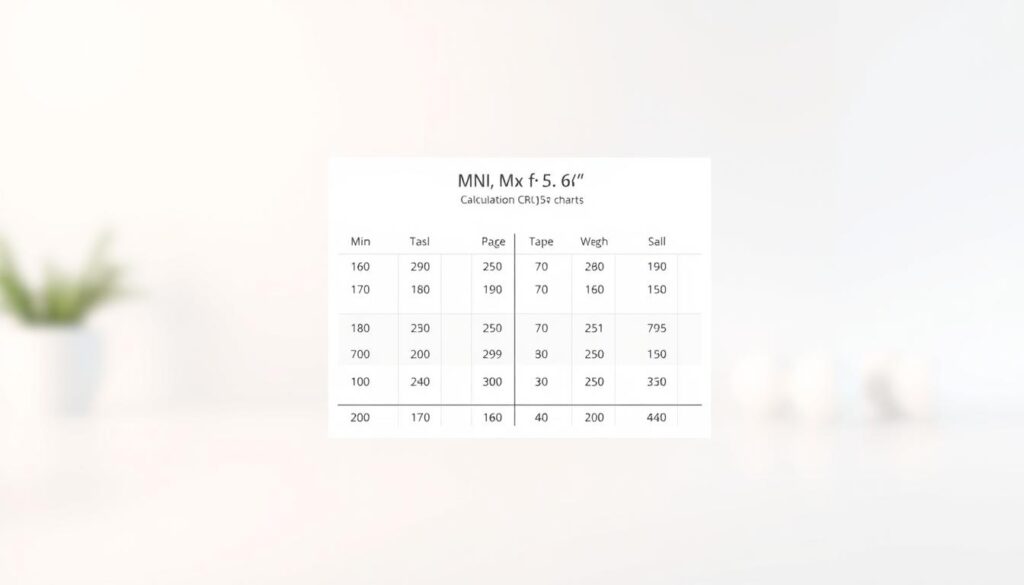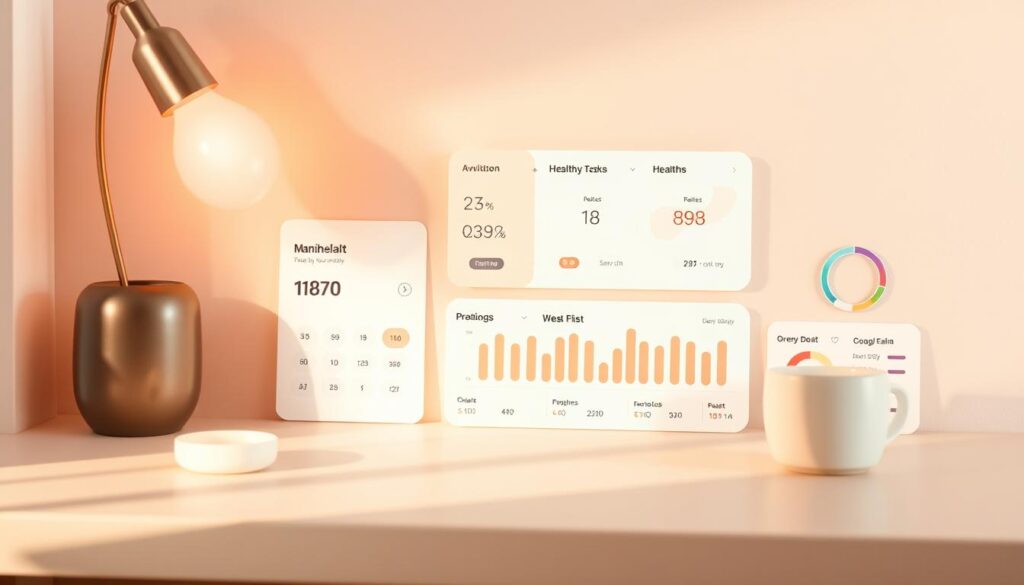What if a single number could reveal critical insights about your health? For women measuring 5’6”, understanding BMI for 5’6” female standards offers a starting point to evaluate weight-related wellness. This metric compares height and weight to identify potential health risks, backed by organizations like the CDC and American Cancer Society.
A 5’6” woman’s BMI calculation uses her weight and 66-inch height to categorize results as underweight, normal, overweight, or obese. While not perfect, this tool helps gauge whether body composition aligns with medical guidelines. For example, a 150-pound individual at this height falls within the normal range (BMI ~24.2).
Trusted sources emphasize its role in preventive care. The CDC’s classification system, paired with the American Cancer Society’s research, highlights how maintaining a healthy BMI correlates with reduced disease risk. However, muscle mass and fat distribution also matter—factors this metric doesn’t address.
This article explores how to calculate and interpret BMI for 5’6” female profiles accurately. You’ll learn to use a BMI calculator, discover complementary health assessments, and review actionable strategies for sustainable weight management.
Key Takeaways
- BMI evaluates weight relative to height, specifically tailored for women at 5’6”.
- Medical institutions like the CDC classify results into four health categories.
- A normal BMI range for this height is between 18.5 and 24.9.
- Muscle mass and body fat distribution aren’t reflected in BMI calculations.
- Combining BMI with other metrics provides a fuller health picture.
Understanding BMI and Its Importance for Women’s Health
Health assessments often start with a simple number that reflects body composition. The body mass index compares weight to height, offering a standardized way to categorize health risks. For a bmi for 5 6 female profile, this measurement helps identify whether weight aligns with medical guidelines for a 66-inch frame.
What BMI Reveals About Wellness
Calculated as weight divided by height squared, this index serves as a screening tool for potential issues. The CDC states adults with a body mass index between 18.5–24.9 typically have lower risks for heart disease and diabetes. Research from the American Cancer Society links higher scores to increased cancer likelihood due to excess body fat.
Age-Specific Considerations
Women in their 50s and 60s face unique metabolic changes affecting weight management. Muscle loss and hormonal shifts can skew results, making healthy weight maintenance more challenging. While the body mass index remains useful, experts recommend pairing it with waist measurements for accuracy.
“BMI provides a starting point—not an endpoint—for evaluating health risks in older adults,” notes a CDC report on age-related weight guidelines.
Though limited in assessing muscle versus fat, this metric helps track progress toward wellness goals. Upcoming sections will detail how to calculate and interpret bmi for 5 6 female results effectively using tools like a bmi calculator.
Calculating and Interpreting bmi for 5 6 female
Numbers don’t lie—especially when assessing health markers tied to weight and height. For women standing 5’6”, mastering the calculation and interpretation of this index unlocks personalized insights into wellness. Let’s break down the process.
Step-by-Step BMI Calculation Process
Start with two numbers: weight in pounds and height converted to inches (66 inches for 5’6”). The formula from the CDC and Medical News Today is straightforward:
- Multiply weight by 703 (e.g., 150 lbs × 703 = 105,450)
- Square the height (66 × 66 = 4,356)
- Divide the first result by the second (105,450 ÷ 4,356 ≈ 24.2)
This index places individuals into four categories defined by the National Heart, Lung, and Blood Institute. A result below 18.5 signals underweight, while scores above 30 indicate obesity.
How to Interpret the Results
Context matters. A 24.2 score falls within the normal range (18.5–24.9), suggesting lower risks for heart conditions linked to excess weight. However, athletic builds with higher muscle mass may show elevated numbers without health dangers.
“BMI alone doesn’t distinguish fat from muscle. Pair it with waist measurements for clarity,” advises the National Institutes of Health.
Factors like age and body composition influence accuracy. For instance, postmenopausal women often experience fat redistribution, which this index doesn’t address. Always consult a healthcare provider to discuss personalized implications.
Health Implications and Risk Factors for a 5 6 Female
Understanding how weight impacts wellness becomes crucial when interpreting health metrics. For women at this height, maintaining a score within the 18.5–24.9 range significantly reduces disease likelihood. Medical News Today reports that scores outside this zone correlate with a 30% higher risk developing heart issues and type 2 diabetes.
Cardiovascular and Metabolic Risks
A high BMI often signals excess body fat, which strains the heart and disrupts insulin function. The CDC notes that individuals above 25 face doubled odds of hypertension compared to those in the normal range. Even moderate weight loss (5–10% of body weight) can lower these dangers.
| BMI Range | Category | Associated Risks |
|---|---|---|
| <18.5 | Underweight | Nutrient deficiencies, weakened immunity |
| 18.5–24.9 | Normal | Lowest disease likelihood |
| 25–29.9 | Overweight | Elevated blood pressure, prediabetes |
| ≥30 | Obese | Severe cardiovascular strain, diabetes |
Aging and Body Composition Shifts
Muscle mass naturally declines by 3–8% per decade after 30, per CDC data. This loss can artificially lower the index despite increased fat storage—a concern for older adults. Regular monitoring helps adjust lifestyle strategies.
“Interpreting scores requires context. A 65-year-old and 25-year-old with identical results may have vastly different health profiles,” states a Johns Hopkins Medicine analysis.
Personalized assessments combining waist measurements and activity levels provide clearer insights than standalone numbers. Always consult healthcare providers to address individual risk factors.
Using a BMI Calculator and Other Measurement Tools
Tracking health metrics becomes straightforward with modern tools designed for precision. For women at 5’6”, combining a BMI calculator with complementary measurements offers deeper insights into wellness. Online tools from sources like the CDC simplify tracking by instantly analyzing weight-to-height ratios specific to bmi for 5 6 female profiles.
Why Digital Tools Matter
Medical News Today highlights three advantages of BMI calculators: speed, accessibility, and trend analysis. These platforms help identify gradual weight changes that might signal health shifts. However, muscle density and biological sex influence results—athletes or those with higher lean mass may see skewed numbers.
Beyond Basic Metrics
Waist circumference provides critical context missing from standalone calculations. Studies show women with waist sizes over 35 inches face double the diabetes risk, regardless of BMI. The CDC recommends pairing these measurements for accuracy, especially during age-related metabolic changes.
“Waist size reflects visceral fat levels better than BMI alone—a key predictor of heart disease,” explains a CDC report on women’s health screening.
Body fat percentage tests using calipers or smart scales add another layer. For those managing weight, combining tools creates a complete picture. This approach addresses limitations in bmi for 5 6 female assessments while supporting personalized health strategies.
Conclusion
Knowledge transforms numbers into actionable health strategies. For women at 5’6”, understanding BMI for 5’6” female standards provides a foundation to assess wellness. This guide outlined how to calculate, interpret, and apply this tool alongside waist measurements and body composition analysis. Organizations like the CDC stress regular monitoring to maintain healthy weight levels and reduce disease risks.
Reliable tools, such as BMI calculators, simplify tracking progress. Pair these with strategies from trusted sources like body composition improvement guides for balanced results. Remember—scores outside the 18.5–24.9 range signal higher chances of heart issues or diabetes, but they’re just one piece of the health puzzle.
Every adult benefits from informed choices. Use accurate information to create sustainable habits. Whether adjusting nutrition or activity levels, small steps lead to lasting change. Stay proactive, stay curious, and let BMI for 5’6” female insights guide—not define—your wellness journey.




